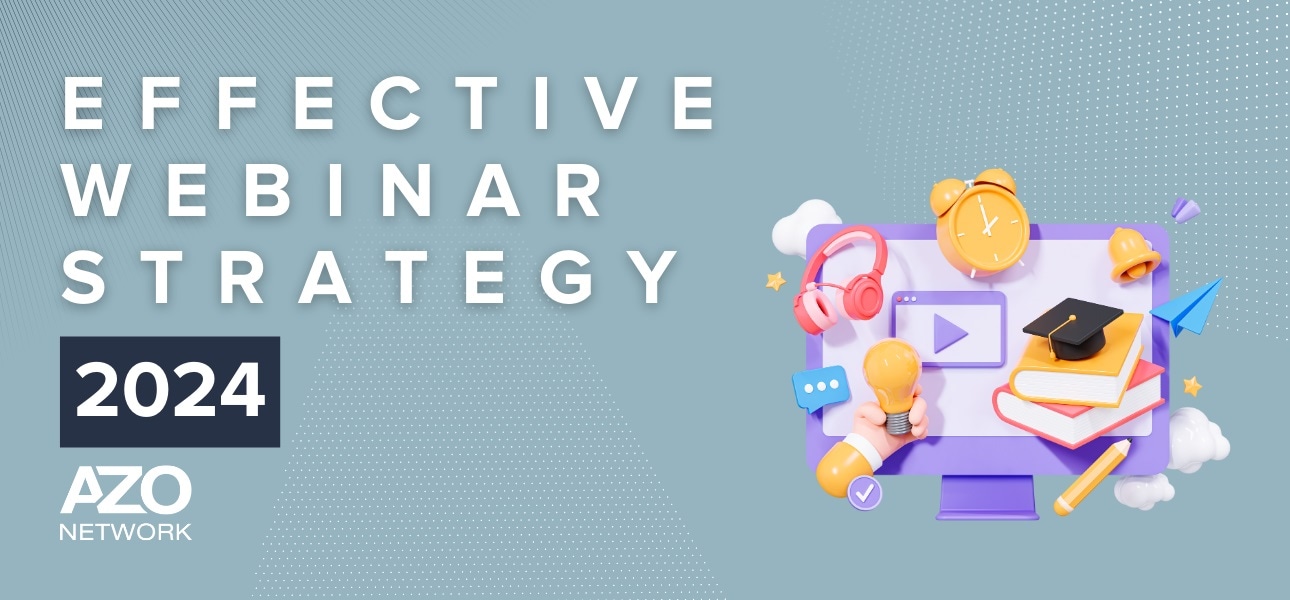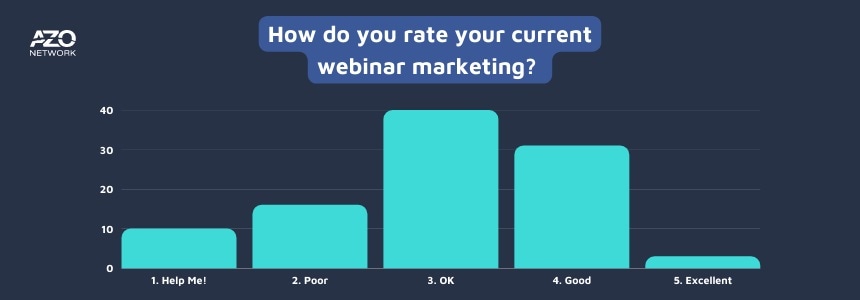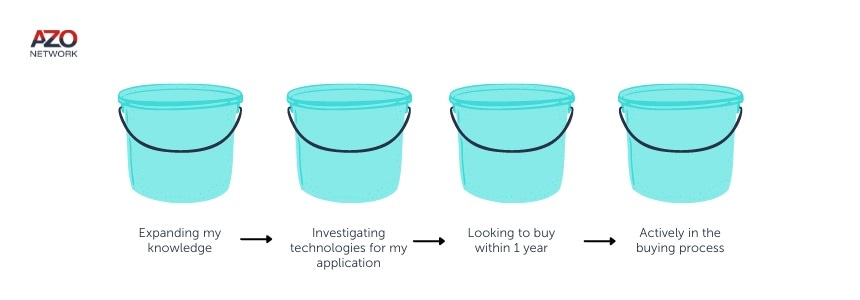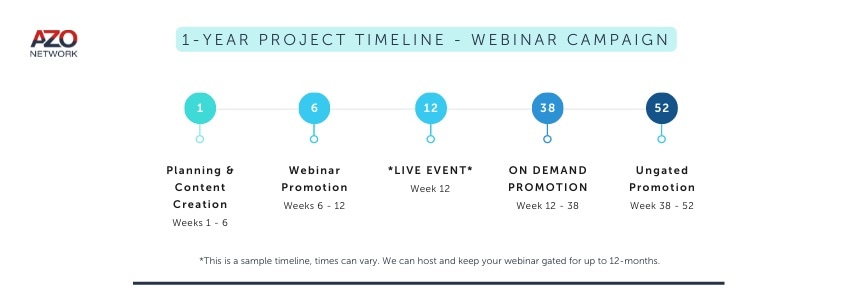
We asked a recent webinar audience how they rated their current scientific webinars. The results were a mixed bag. Effective scientific webinars don't need to be complex, but they do require a lot of planning and project management skill. In this blog post, we will highlight the 4 key areas that we think are crucial to producing an effective scientific webinar.

What makes a great scientific webinar experience?
Like I said in the intro, we look at 4 key areas when creating scientific webinars: engaging speakers, amazing content, an engaged audience, and a happy sales team. Overarching those 4 areas are the key messages that we are trying to communicate. We focus on these points, and we believe that giving them equal value is the key to webinar success. Let's take a look at each:
1. Engaging Speakers
In the industries in which we operate, what we want to communicate is often complex and there is a tendency for speakers to include a list of points that can be read or figures that need calculating on their slides.
But if your speaker(s) do that, then you are asking your audience to listen to them and do complex calculations or read at the same time as listening.
In a scientific webinar, the job of the speaker(s) is to summarize and give life to the main points; it’s not to go into very granular detail about every small aspect of your science.
Conclusion: Provide clarity over complexity!
2. Amazing Content
The key thing to remember here is that people who are attending your webinar have explicitly volunteered their time to engage with a content format that is visual and that involves them. So, we need to consider that when selecting a format for our scientific webinar content.
Most companies prefer the traditional presentation style with one speaker and a host. But you can also look at talking heads style, multiple presentations and speakers, 1:1 interviews, and live Q&A. There are plenty of options that can help you to present your key messages.
Conclusion: The content should help deliver your key messages and enhance the audience experience.
3. Engaged Audience
The first step to an engaged audience is to ensure you have the right audience attending your event. Be very specific with your pre-event marketing about who the webinar is for and, probably more importantly, who it is not for. If you operate in various markets, segment your audience list so your marketing can be more personalized and relevant. Utilizing quality 3rd party lists can also help to boost your event registrations.
A good audience experience will come from providing the first two points above; an engaging speaker with good content. On top of that, you can also involve your audience through polls, Q&A, and by mixing up your multimedia. A scientific webinar often provides complex information, so a variety of multimedia can help keep your audience engaged.
Conclusion: Make your audience part of the experience and ensure they leave your webinar having learnt something new.
4. Happy Sales Team
Your sales team doesn't just want a list of names of people who attended your scientific webinar. They want key market intelligence that provides them with conversation starters and intent data points.

You can gather market intelligence with your registration questions, in-webinar polls and end-of-webinar surveys. Why not also try a CTA in your event where you specifically ask the audience if they want to speak in a breakout room or book a follow-up call?
When running scientific webinars for our clients, the common question is, 'What best describes your current situation?' This enables us to present the registration list as per the graphic above. We will then further qualify the audience during the event with polls such as, 'What use would you have for product X?'
Conclusion: Provide your sales team with leads based on intent!
How do you promote scientific webinars?
Start by segmenting your target audience and consider the channels that your audience uses. This will likely be a combination of customized emails, newsletters, social media, 3rd party sites, paid advertising and your website.

What is often forgotten about webinars is that they are a continuous lead generation cycle. They are not just about the live event. By changing our mindsets to not only focus on the live date, but we also give ourselves opportunities to promote all stages of the webinar as shown in the graphic above - live event, on-demand period and ungated period.
>>>Ultra-targeted promotion – With 135,000,000+ annual unique visitors across 11 websites and 900,000+ first-party subscribers
Scientific webinars and your wider marketing strategy
Remember our buckets above? Well, a scientific webinar is just one touch point in your wider marketing strategy. Providing the next steps for your audience based on their current intent levels will help build brand affiliation and generate demand going forward.
- Expanding my knowledge: provide additional blogs or whitepapers to help them continue learning.
- Investigating technologies for my application: consider links to other webinars or videos of that tech in use.
- Looking to buy within 1 year: start introducing them to your relationship managers so they can build on those relationships and schedule product demonstrations.
- Actively in the buying process: make it as easy as possible to take the next step, like booking a demo or strategy call, buying the product, etc.
Providing these next steps should be easy with any decent webinar platform. We will always encourage clients to include a range of additional content to help their audience take next steps.
Conclusion and next steps
If you are looking to learn more about scientific webinars, then you can check out some of our additional resources below:
If you are actively looking for a scientific webinar partner, then please get in touch today to discuss your requirements. Click here to request information.
Thanks for reading.